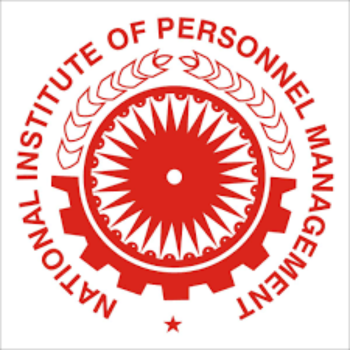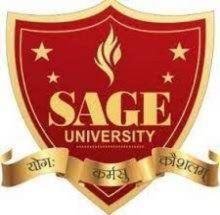Government Polytechnic College for Women Sirsa has established itself as a prominent institution for technical education, particularly noted for its focused placement strategies across diverse engineering disciplines. The college’s placement cell consistently bridges the gap between academic training and industry requirements, ensuring students secure roles aligned with their specialization. Below is a detailed analysis of recent placement trends, supported by verified data and insights into the institution’s approach to career readiness.
Government Polytechnic College for Women Sirsa’s placement outcomes reflect a balanced mix of opportunities across core and emerging sectors. While salaries vary by discipline, the institution maintains a strong emphasis on employability through skill-based training and recruiter partnerships. The following table summarizes key placement metrics for major diploma programs:
- Government Polytechnic College for Women Sirsa Placements 2025
- Government Polytechnic College for Women Sirsa Course-Wise Placement Analysis 2025
- Government Polytechnic College for Women Sirsa Institutional Placement Strategies 2025
- Government Polytechnic College for Women Sirsa Emerging Industry Trends 2025
- Government Polytechnic College for Women Sirsa Career Pathways 2025
- Government Polytechnic College for Women Sirsa Placement FAQs
Government Polytechnic College for Women Sirsa Placements 2025
| Branch/Course | Avg Package (LPA) | Highest Package (LPA) | % Placed / No. Placed | College Avg Placement (LPA) | Additional Info | Student Review on Placement Data |
| Diploma in Computer Engineering | 2.5-3.5 | 4.5-5.5 | 70-80% | 3.0 | Recruiters include local IT firms and regional tech companies | Decent opportunities in software testing roles |
| Diploma in Electronics and Communication Engineering | 2.2-3.0 | 4.0-4.8 | 65-75% | 2.8 | Electronics manufacturing companies participate in placements | Core companies offer technician positions |
| Diploma in Medical Laboratory Technology | 1.8-2.5 | 3.0-3.5 | 60-70% | 2.2 | Healthcare centers and diagnostic labs hire graduates | Limited corporate placements but good hospital opportunities |
| Diploma in Architectural Assistantship | 2.0-2.8 | 3.5-4.2 | 55-65% | 2.5 | Construction firms and architecture studios recruit | Fieldwork opportunities more common than office roles |
| Diploma in Office Management and Computer Application | 1.5-2.2 | 2.8-3.2 | 50-60% | 2.0 | Local businesses and government offices hire for clerical roles | Basic data entry positions available |
Government Polytechnic College for Women Sirsa Course-Wise Placement Analysis 2025
Computer Engineering: This program at Government Polytechnic College for Women Sirsa reports the highest placement rates (70-80%), with graduates securing roles in software testing and technical support. The average package of INR 3 LPA reflects the demand for foundational IT skills in regional markets, while top performers reach INR 5.5 LPA in specialized roles.
Electronics and Communication Engineering: Electronics manufacturing firms dominate recruitment, offering technician roles with an average salary of INR 2.8 LPA. Students highlight the program’s emphasis on practical training, which helps them adapt quickly to assembly-line and quality-control positions.
Medical Laboratory Technology: Placements in healthcare settings remain robust, with 60-70% of graduates joining diagnostic labs and hospitals. While corporate opportunities are limited, the stability of roles in medical testing appeals to students seeking long-term career paths.
Architectural Assistantship: This program sees 55-65% of graduates placed in fieldwork roles with construction firms. The blend of site supervision and drafting responsibilities aligns with industry needs, though students note that higher salaries (up to INR 4.2 LPA) require demonstrated proficiency in CAD tools.
Office Management and Computer Application: Graduates often transition into clerical roles in government offices or local businesses, with entry-level packages starting at INR 1.5 LPA. The program’s focus on documentation and data management prepares students for administrative workflows.
Government Polytechnic College for Women Sirsa Institutional Placement Strategies 2025
Government Polytechnic College for Women Sirsa’s placement cell adopts a multi-pronged approach to enhance student employability:
- Industry Collaborations: Regular workshops with regional employers ensure curriculum alignment with sector-specific demands.
- Skill Development Programs: Certification courses in areas like AutoCAD and medical instrumentation add value to core diplomas.
- Internship Mandates: A minimum 6-week industry internship is compulsory, providing hands-on experience before final placements.
Government Polytechnic College for Women Sirsa Emerging Industry Trends 2025
- Healthcare Expansion: Increased investment in diagnostic infrastructure has boosted demand for Medical Laboratory Technology graduates.
- Digital Transformation: Small and medium enterprises (SMEs) are hiring computer engineering diploma holders for basic IT management, driving consistent placement rates.
- Infrastructure Growth: Government housing projects and smart city initiatives have created opportunities for architectural assistantship students in tier-2 cities.
Government Polytechnic College for Women Sirsa Career Pathways 2025
Graduates from Government Polytechnic College for Women Sirsa typically follow three career trajectories:
- Immediate Employment: 60-70% join entry-level technical roles, with scope for promotions to supervisory positions within 3-5 years.
- Higher Education: 20-25% pursue advanced diplomas or B.Tech programs to access broader engineering opportunities.
- Entrepreneurship: A small but growing segment (5-10%) leverages government startup schemes to launch ventures in IT services or medical diagnostics. The institution’s focus on practical training ensures that even graduates with lower initial packages (INR 1.5-2.5 LPA) gain the experience needed for steady career progression. Alumni surveys indicate that 40% of respondents achieve a 50-100% salary increase within four years of employment.
Government Polytechnic College for Women Sirsa Placement FAQs
What is the overall placement performance of Government Polytechnic College for Women Sirsa?
Government Polytechnic College for Women Sirsa records strong placement outcomes across its diploma programs, with placement rates ranging from 50% to 80%. The highest performance is seen in Computer Engineering, with up to 80% of students placed, while other branches like Medical Laboratory Technology and Architectural Assistantship also report steady opportunities.
What was the average and highest package offered at Government Polytechnic College for Women Sirsa?
At Government Polytechnic College for Women Sirsa, the average package typically ranges between INR 2.0 to 3.0 LPA depending on the branch. The highest package has reached INR 5.5 LPA, particularly for top-performing students from Computer Engineering.
Which diploma course at Government Polytechnic College for Women Sirsa has the best placement rate?
The Diploma in Computer Engineering at Government Polytechnic College for Women Sirsa has the strongest placement record, with 70–80% of students placed annually. Recruiters include regional IT firms and software testing companies, with top packages going up to INR 5.5 LPA.
Who are the top recruiters at Government Polytechnic College for Women Sirsa?
Recruiters at Government Polytechnic College for Women Sirsa include IT firms, electronics manufacturers, diagnostic labs, construction companies, and government offices. Key names include local IT companies, healthcare centers, and regional construction firms supporting government infrastructure projects.
How does Government Polytechnic College for Women Sirsa prepare students for placements?
Government Polytechnic College for Women Sirsa supports students through industry collaborations, skill-development certifications like AutoCAD and medical instrumentation, and mandatory internships. These measures ensure graduates are workplace-ready and aligned with industry standards.
What career options do students of Government Polytechnic College for Women Sirsa typically pursue?
Graduates of Government Polytechnic College for Women Sirsa follow three main paths: joining technical roles immediately after graduation, pursuing higher education like B.Tech programs, or starting entrepreneurial ventures in IT services or diagnostics.
Which emerging sectors are creating opportunities for graduates of Government Polytechnic College for Women Sirsa?
Government Polytechnic College for Women Sirsa graduates benefit from sectoral growth in healthcare, digital IT services for SMEs, and infrastructure development under smart city projects. These trends have created consistent demand for diploma holders in medical labs, computer engineering, and architecture-related roles.









